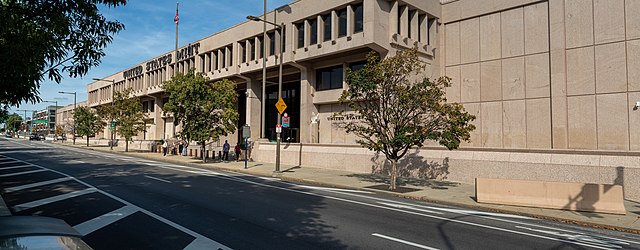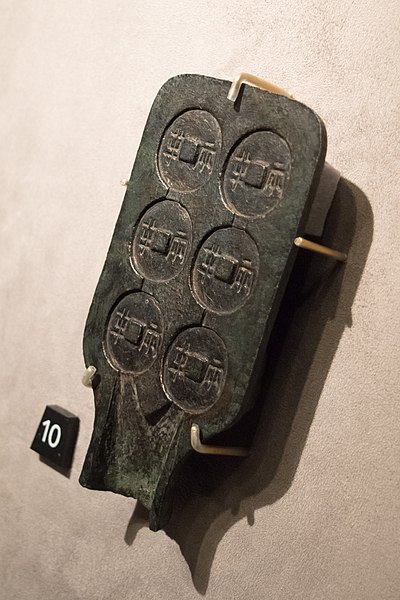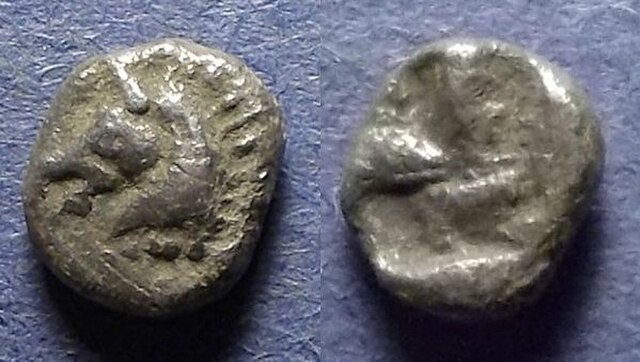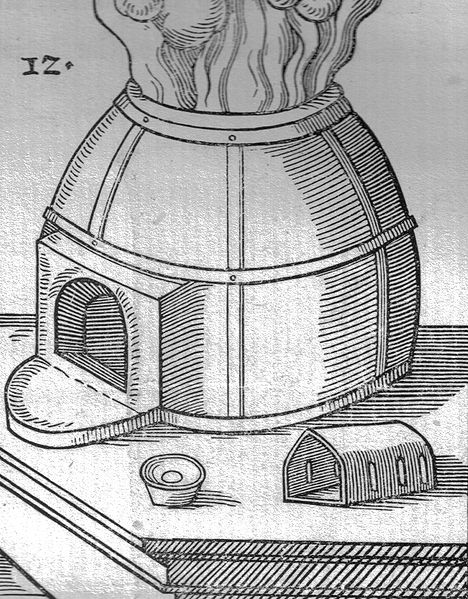Mint-made errors occur when coins are made incorrectly at the mint, including anything that happens to the coin up until the completion of the minting process. Mint error coins can be the result of deterioration of the minting equipment, accidents or malfunctions during the minting process, or interventions by mint personnel. Coins are inspected during production and errors are typically caught. However, some are inadvertently released into circulation. Modern production methods eliminate many errors and automated counters are effective at removing error coins. Damage occurring later may sometime resemble true mint errors. Error coins may be of value to collectors depending on the rarity and condition. Some coin collectors specialize in error coins.
1999 U.S. Lincoln cent depicting wavy steps.
U.S. dime Type 1 blank (left) and one cent Type 2 blank (right)
Clipped planchet U.S. nickel showing the Blakesley Effect near the word LIBERTY
Lamination crack on a U.S. Jefferson nickel
A mint is an industrial facility which manufactures coins that can be used as currency.
United States Mint, Philadelphia
Bronze mold for minting banliang coins, Warring States period (475–221 BC), State of Qin, from an excavation in Qishan County, Baoji, Shaanxi province, China
Ionia, uncertain city (possibly Kyme, Aeolis) 600–550 BCE, Hemiobol. Horse head, rough incuse
A furnace for producing molten metal for coin production.








